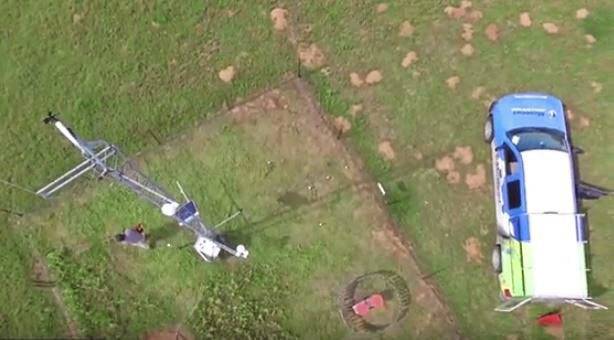https://mirror.triblive.com/news/pennsylvania/penn-states-new-weather-data-collection-system-to-gather-localized-information/
Penn State's new weather data collection system to gather localized information

When it comes to Western Pennsylvania’s recent weather woes, forewarned is forearmed.
Those warnings might get a little more accurate and timely with a new Penn State project to install a series of mini weather stations across the state.
The Pennsylvania Mesonet — short for mesoscale network — will eventually comprise 20 weather stations designed to collect data on smaller-scale weather phenomena. Data loggers on each tower will send the information to a server at the Pennsylvania State Climate Office in University Park, which will make it available to the National Weather Service, PennDOT and other agencies.
The data collection could result in more accurate weather forecasting and could mean the difference between knowing about an impending thunderstorm and being caught off-guard, state climatologist Kyle Imhoff said.
“The problem with smaller-scale weather phenomena is you’re not always going to see that kind of weather,” Imhoff said. “These mesonets are there to see those kinds of things that you wouldn’t normally see.”
The stations will be set up to send data about every five minutes, he said.
“When you’re getting information every couple of minutes, that would help with seeing a storm that could drop tons of rain or snow, or increase the visibility of things that we struggle to observe on the ground,” Imhoff said.
In the case of lake effect snow, some bands are so narrow and so localized, they are hard to detect without mesoscale equipment, he said.
“This kind of data will improve weather forecasting, it’ll improve real-time weather monitoring and can improve decision making,” he said.
So far, one mesonet station has been installed on the University Park campus. Nineteen additional stations are planned for other Penn State campuses, state parks and areas where there are gaps in weather stations. One is planned for Mt. Davis in Somerset County — the highest point in the state — and a couple are planned for the Pittsburgh region, Imhoff said.
Funding for the project is coming from Penn State and the Pennsylvania Emergency Management Agency — $250,000 for site installations and $100,000 for website development and maintenance, respectively, he said.
Each mesonet site will consist of a concrete pad with either a 10-meter or 3-meter tower, plus cross beams and sensors. Installations should be completed by the middle of 2020.
Copyright ©2025— Trib Total Media, LLC (TribLIVE.com)
